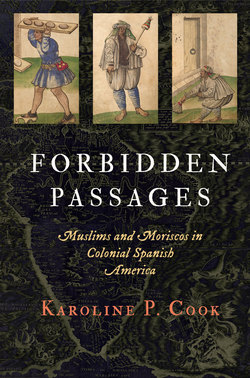Forbidden Passages

Реклама. ООО «ЛитРес», ИНН: 7719571260.
Оглавление
Karoline P. Cook. Forbidden Passages
Отрывок из книги
Forbidden Passages
Peter C. Mancall, Series Editor
.....
When trying Moriscos, inquisitors had at their disposal a lengthy list of practices that they considered evidence of “Islamismo.” This list of thirty-six points against Moriscos, compiled by the fifth Inquisitor General Alfonso Manrique, contains accusations concerning both their perceived religious beliefs and customary practices.42 These points, echoed in the promulgations of Spanish synods and the writings of Spanish theologians depicting Moriscos and Islam, also appear in the early edicts of grace preached across Spanish American towns in the newly established inquisitorial tribunals. Several points on Manrique’s list informed inquisitors’ opinions on the case of Juan de Burgos, a Morisco who was tried before the Toledo tribunal after having held a party for his friends. According to Manrique, “With respect to the heretical mahometanizing Moriscos, let [Christians] be ordered to denounce the following acts and sayings: … If they have circumcised their sons and given them Muslim names or expressed a desire that others participate in their naming…. If they have sung Muslim songs and done zambras or dances, and leilas or songs using prohibited instruments.”43
The trial against Juan de Burgos highlights the inquisitorial prosecution of a number of these practices. In 1538 Burgos, his wife Julia, and a number of their friends gathered together at his house for “the zambra where they were dancing and singing in Arabic, and there they all ate dinner together.”44 The Morisca slave Catalina’s testimony reflects the course of events that night: “Around the time of the Christmas that just passed, there came to this city of Burgos Moriscos from Seville and they went to spend the night in the house of Julia. This witness, having been asleep in her bed, was called by Juan de Burgos…. [They] went to the house of the said Juan de Burgos … and there … [they] did the zambra, playing a cane like a flute, with atabalejos, and dancing barefoot and singing and speaking in Arabic.”45 Catalina added, “The two Moriscos called the said Julia Fatima and the said Julia called her husband Nazar … and this witness was called Fiasea by the said Julia and her husband, and that all these names were spoken there that night, and also they were spoken outside when they encountered each other, talking in Arabic.”46 These images of dancing zambras, conversing in Arabic, and maintaining Arabic names provide insights into the vitality of Morisco social networks. (See Figure 4.) Conflating religious and ethnic diversity with disloyalty and political dissent, Spanish authorities came to interpret social gatherings as underlying a larger subversive trend.
.....